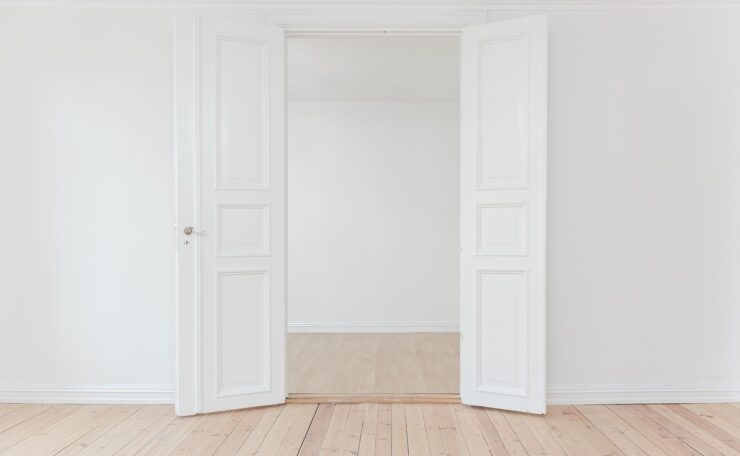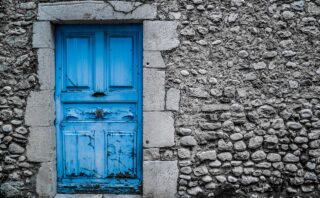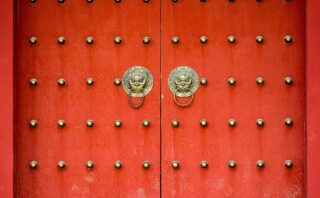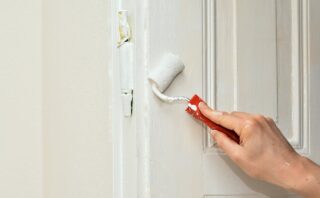Each door, despite its common purpose, has a number of different characteristics that are unique to it. Some door constructions have better aesthetic qualities, others – noise insulation properties, others – design features. On the basis of the required tasks, selected those models that are most accurately perform the functions assigned to them. Aesthetics so far set aside, this question is individual and depends on personal preferences of the buyer. For now, consider types of interior doors by method of opening. Let’s study all these varieties and determine their best characteristics.
Types of interior doors by method of opening
Not always the good old classics in the form of swing doors helps. Sometimes there are situations where you need a more concise and compact design. This is when you can look at sliding, swivel or rotary mechanisms. But let’s not get ahead of ourselves. Let’s consider each of these types in more detail.
Let’s describe the following types of doors according to the method of opening:
- hinged;
- sliding;
- rotary.
There is a huge range of interior doors on today’s door construction market. It is not always the buyer’s choice that is justified by the need to fit the design into this or that opening. Sometimes the purchase is made in order to stand out, to show your interior from the best side. This is when a modern way of opening, such as a rotary door, is just right.
Swinging doors
Regardless of the more sophisticated designs on the market, swing doors are still a top seller. They have the familiar way of opening, and the appearance can be changed by choosing different door cladding – here the range of options is quite wide, from democratic lamination or staining to precious wood veneer.
However, despite the external differences in decorative coating, their opening mechanism is the same – the hinges, on which the leaves are hinged, are attached to the side of the leaf, and the leaf itself can swing open only in one direction (inside or outside the room). When opening and closing the free space of the room is used – you can’t put a closet or a sofa close to such a door, as the furniture will interfere with the free movement of the door.
The advantages of swing doors:
- simple installation, which does not require special knowledge and specialized tools (all work is carried out with standard tools of the master);
- low price – here we mean the price of the swing mechanism, because the leaf itself may have a high cost;
- the dimensions of the swing doors fit the standard openings of most apartments, so their installation will not require reducing or increasing the opening;
- it is possible to close the opening of any size – if one sash is not enough, you can install two or more sashes in one opening;
- a huge range of models – in terms of external characteristics this type of interior doors has the most options.
Cons:
- Space is needed for full door travel;
- not recommended for small, narrow rooms.
It should also be noted that swing doors have a variety called “swing doors”. They differ in that they are able to open in both directions. No matter where you go – forward or backward – these doors will always open in the direction of your movement. You have probably seen them in cafes or public institutions, but they are not widely used in residential apartments.
Sliding doors
Unlike swing doors, the sliding door leaf does not swing forwards or backwards, but slides to the side along the wall. It is not only practical and ergonomic, but also a stylish solution for modern interiors – for example, high-tech, minimalist and modern. With this type of door you can close the doorway leading to any room in the apartment or house, but such designs are especially popular in the kitchen, as they allow you to save space.
This type of door has its own subspecies, which differ in method of attachment and construction.
According to the method of attachment we can distinguish:
- Compartment doors – here the door leaf “walks” along the wall on the outside;
- Cassette door – when sliding it “drives” into the wall.
The cassette mechanism has one advantage – the canvas and roller mechanism are protected from dust and dirt by a box, into which the door slides. And another advantage is the soundproofing characteristics of the cassette door – thanks to the tight closing it does not let sounds and smells in.
The sliding door not only slides to the side, but also folds. And it can do this in two ways:
- a book;
- accordion.
The main visual difference is the number of flaps – the accordion has more flaps (respectively, the width of the flap is less) and they move on the top rail. Bookshelf, as a rule, has two massive and heavy sashes, and they “walk” on two rails: the upper and lower. The bookcase is used in the living room, while the accordion is more suitable for the closet.
Rotary doors
Here is another type of door, which has no analogues by the way it opens. At one point door breeders crossed a swing design with a sliding one, creating a completely new type of door with a unique opening mechanism.
The revolving door simultaneously swings open and slides to the side, which saves a lot of useful space and allows you to put almost right up against the door, for example, a dresser. The door can swing out to either side in a swing-door effect. This is a decisive advantage for people with restricted mobility – whichever side of the door opening is used, the door opens in the direction of travel.
Advantages of rotary doors:
- no analogues;
- opens both ways;
- unusual design and stylish appearance;
- economy of space;
- ease of use;
- tightness;
- good soundproofing characteristics.
Disadvantages:
- only light sashes can be used, as the rotary mechanism can only withstand a non-heavy leaf;
- it is difficult to produce a revolving door, but easy to install the ready-made structure;
- high cost, which is quite justified, taking into account the jewelry fitting of all the elements on the high-precision equipment;
- the rotary mechanism lasts less than classic hinges and roller guides.
But in general, when it is not possible to install swing door designs and for some reason you do not want to put a sliding door, the rotary door really comes in handy.
These are the kinds of interior doors by method of opening. In each case, the choice depends on the requirements that are placed on the door design. For some people economy of space is important, others want to keep up with the times and choose newfangled solutions, and for others ease of operation is more important.




